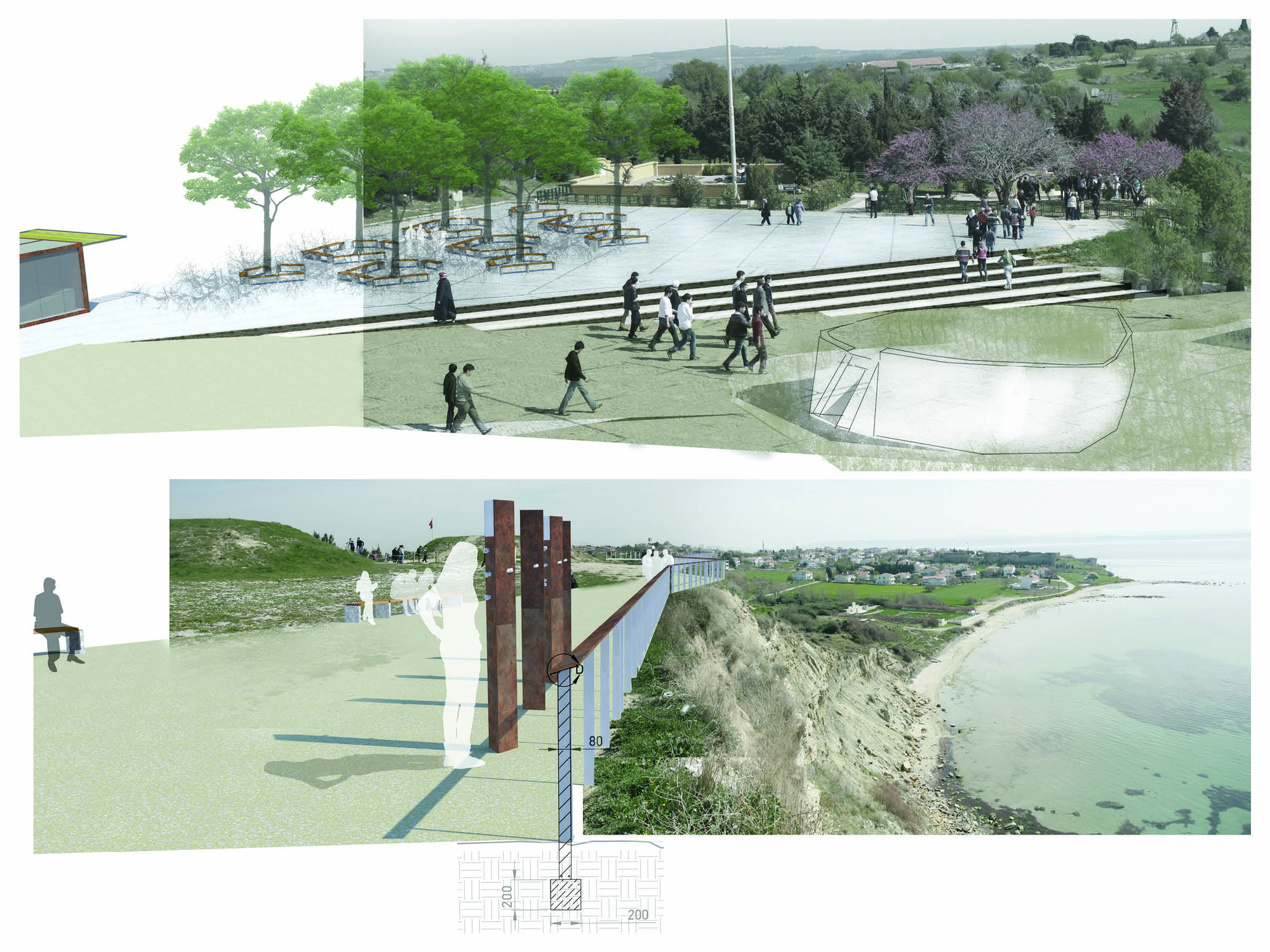
The Gallipoli Peninsula, at the Western end of Turkey, holds a particular significance for the country as the site of a major World War One battle in which the declining Ottoman Empire repelled an attempted invasion by British forces. Today, it is seen as one of the defining moments that contributed to the formation of modern day Turkey, and the site of the battle is commemorated by a national park which includes a series of monuments and memorials at the southern tip of the peninsula.
Aiming to consolidate these sites in to a more coherent whole, the Çanakkale government launched a competition to redesign the area, which was won by Istanbul-based practice Sekiz Artı. Read on after the break for more on their design.

The winning design focuses primarily on the access to the various sites, with a redesign that focuses on establishing hierarchies and a wider understanding of the site, both spatially and historically. Describing the existing condition of the park, the architects say:
"The visitors’ relationship with the peninsula does not create a planned access hierarchy, both at the scale of the entire park and at the scales of individual monuments. This eliminates the potential for a holistic impression of the area, as well as the integrity of individual focus points; therefore the possibilities of rich and multilayered experiences. The most visible indicator of this is the feeling that narrative and spatial approaches are created without listening to, without apprehending the soul of the site."

Describing the underlying ideas of their design, they say: "We have had chance to re-consider the semantic and spatial holism the site should possess with this competition. We believe that this holism we are trying to achieve is possible through the concept of 'distancing'."

This distancing is achieved by constructing a single path which links all the sites in the park, called the 'History Line' which allows visitors to view the monuments and memorials from afar before taking the smaller paths to approach them. "With distancing ourselves we can create a possibility to listen the voice of the geography, a gap to sense the soul and the site," say the designers.

The History Line also provides a platform to explain the history of the site, with historical information spread along the length of the trail. The controlled procession along this route allows this history to be told in a coherent narrative, connecting the story correctly with the geography of the battle itself.
Click here to see the second place entry and the third place entry in the competition.

Competition
Gallipoli Peninsula Historical National ParkAward
1st PlaceArchitects
Location
17900 Seddülbahir/Çanakkale Province, TurkeyArchitect, Team leader
Devrim ÇimenLandscape Architect
Ceyda ÖzbilenIndustrial Designer
Ayşenaz TokerGraphic Designer
Petek Kızılelma, pompaa (www.pompaa.com)City Planner, Advisor
Sertaç ErtenClient
Çanakkale GovernorshipProject Year
2014Photographs
Courtesy of Sekiz ArtıCompetition
Gallipoli Peninsula Historical National ParkAward
1st PlaceLocation
17900 Seddülbahir/Çanakkale Province, TurkeyProject Year
2014Photographs
Courtesy of Sekiz Artı


































